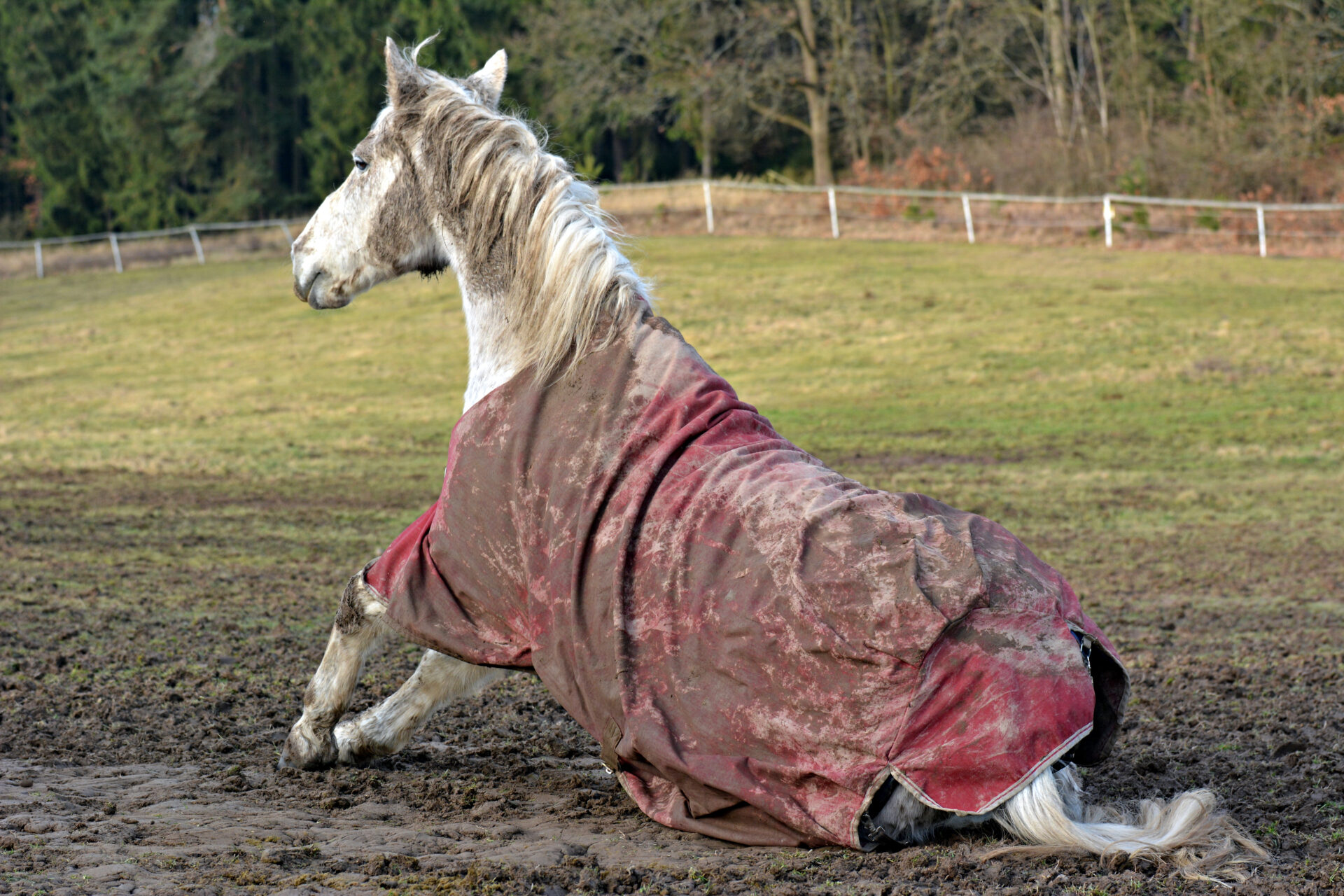What is ‘Mud Fever’?
Mud fever is a non-contagious skin condition which affects the legs of horses. It is largely caused by a bacteria called Dermatophilus congolensis, which lives in the soil. However, a wide range of other factors are relevant in the development of the condition, including mites, fungi, and other bacteria.
How does it affect horses?
Dermatophilus can be present in the environment without causing a problem. However, if a horse’s skin becomes wet and muddy, the skin barrier can be disrupted which allows bacteria to enter the skin, causing an infection. Some horses can be more susceptible to ‘mud fever’, either because they have an underlying condition causing them to be immunocompromised, or because their skin is more susceptible to injury. Often horses with white legs and pink skin or thoroughbred horses can have thinner skin which is more easily damaged. Meanwhile, horses with long feathers (like draught breeds) are at elevated risk because once the skin is wet, it takes a long time to dry out.
What does it look like?
‘Mud fever’ usually affects the lower legs and in particular the pastern region. There are a number of signs that may make you suspicious of the condition, including:
- Scabs on the skin
- Clumps of hair coming away from the skin
- Irritated, sore, broken, or damaged skin
- Stamping and scratching at the legs
- Small wounds
- Yellow discharge from the skin
In more severe cases, the leg may become swollen and painful to the touch, with the horse showing signs of lameness. In these cases an examination by a veterinary surgeon is necessary as the horse may be in a lot of pain.
How can we treat it?
Although it is tempting to pick the scabs off with your fingers, this could introduce further contamination and be very painful for your horse. Instead, it is better to soften the scabs so that they peel off easily. A product such as Derbymed Cutargent Preactive is useful here, as the scabs will become softened after being soaked in the product, they can then be wiped off with a clean cloth. Once the scabs have been removed, the skin should be cleaned with an antiseptic solution such as Hibiscrub as this will help to remove the bacteria on the skin. Following washing, the skin should be carefully dried with a towel and an antibacterial cream such as Filtabac can be applied.
It is important to ensure that all the lesions are treated, otherwise it will be difficult to get the problem under control. If your horse has thick hair or feathers, then clipping the legs may make it easier to clean the skin and apply treatment. Following treatment, the application of stable bandages may be required to protect the legs and reduce any swelling.
Usually, topical treatment is effective but in some badly affected cases, antibiotic and pain relief medications are required. If your horse is not responding to initial topical treatment, then you should contact your vet for further advice.
How can we prevent it?
As the condition commonly occurs when the horse’s skin becomes wet and damaged, it is important to prevent this happening to you horse. This can be achieved by:
- Stabling your horse in very wet conditions
- Avoiding washing your horse’s legs and instead brushing the mud off when it has dried
- Towel drying your horse’s legs when bringing them in from the field
- Using barrier creams such as Keratex Mud Shield Powder or Synovium Mudcare. However, the legs must be clean and dry before the application of the creams to prevent the trapping of bacteria between the skin and the cream.
- Ensuring that all equipment is cleaned thoroughly as bacteria can survive for a long period of time on brushes, boots and other objects.
- Check your horse’s legs daily for wounds, bumps and scabs, any lesions should be treated immediately to prevent the spread.
- Putting overreach boots on your horse to prevent pastern injuries when working.
- Investigating and treating underlying problems if the condition is recurring. Ensure you speak to your vet to arrange an examination and blood sampling as conditions such as Cushing’s disease can make the horse more prone to infections and skin disease.
- Reducing poaching of the fields by providing a hard standing around gateways and feeding areas, and by rotating the pasture
- Ensuring that underlying skin conditions are treated appropriately as mites and fungal disease can cause damage to the skin which allow bacteria to invade the area.






